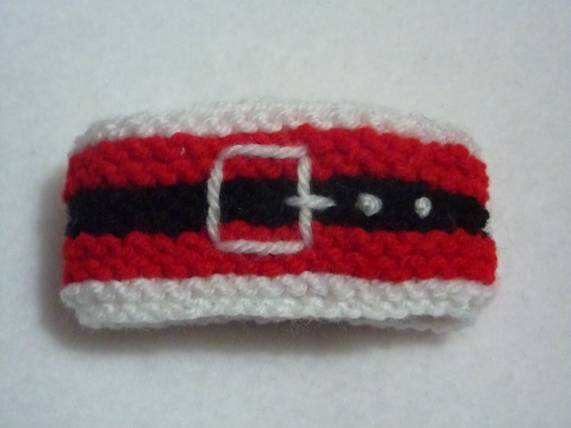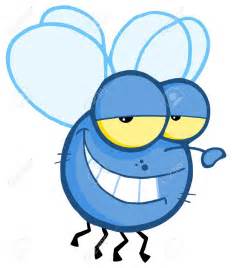
Salty Sam’s Fun Blog for Children
Number 301
lnsects
Hello Everyone

l saw Bill and Bob this week as usual, and they told me that they had the most hilarious story to tell me about what had happened at school this week.
Miss Pringle decided to produce a very interesting lesson for her class by bringing in some visual aids.
She wanted to tell them about insects.
She managed to borrow some locusts from her friend who works in The Rocky Bay Animal World.
She thought her class would be interested to see them.
She thought the locusts would be an interesting focal point for her biology lesson about insects.
Sadly it went terribly wrong.
Because, on entering the classroom she accidentally dropped the jar of locusts and they escaped and hopped all over the classroom.
When the children saw what had happened they did not react well.
Some of the children screamed and ran out of the room.
Some tried to stomp on the locusts and some started clambering over the furniture to get away from them.
Miss Pringle tried to recapture her lost locusts as quickly as possible.
She took an old coffee jar from her desk that had some spare pencil erasers in it and used it as a new container to put the locusts in.
She tied some tissue paper over the top of the jar and made some tiny holes in the paper to let air into the jar.
She knew how many locusts she had started with. Unfortunately, some of the insects that went back in the container were in bits by the time she had retrieved them!
lt took longer to calm the children down than to recapture the escaped insects.
Luckily, two of her pupils did courageously help her out.
When everyone was sitting down at their desks again and the broken glass had been swept away, Miss Pringle could at last start her lesson.
(The life of a teacher can be very tough.)
And this is what she had to say the the children…
There are more insects on Earth than any other kind of animal. ln fact, there are four times as many insects as all the other animals put together.
They first appeared on Earth about 400 million years ago.
They all have six legs. lf a creature has eight legs it is an arachnid. Many insects have wings and so they can fly. Some live underground and some live in water.
One in ten animals on this planet is a fly.
An insect’s body has three parts. The head has eyes, jaws and antennae which act as feelers. Behind the head is the part of the body called the thorax. The thorax has the legs and the wings. Then at the back of the body, the abdomen contains the stomach and other internal organs.
There are at least 850,000 different kinds of insects. The smallest can only be seen through a microscope while the largest beetle could be larger than your hand.
They can be brightly-coloured or camouflaged in order to blend in with their surroundings.
Many insects are harmful to humans because they carry diseases – like flies or cockroaches. Some destroy crops and do much damage if they arrive in a huge swarm such as locusts.
Lice and fleas which suck blood are also harmful. The word to feel ‘lousy’ comes from the word louse – ‘lice’ is the plural of louse.
The Anopheles mosquito carries the deadly disease of malaria. The female bites people to suck their blood, and as it feeds, juices in its tube-like mouth spread the malaria germs.
But many insects are actually quite useful because they pollinate flowers and eat other insects that do harm. About 80% of our food crops would not flourish without pollinating insects.
Many birds and reptiles need insects to provide them with a nutritious diet.
Most insects live a solitary life. Their view of the world is a lot different from ours. They have different kinds of eyes; sometimes they can see objects in different ranges of light. As they make their way through the undergrowth a small leaf may seem like an enormous roadway!
Some insects, like bees, ants and termites exist in social groups. Social insects live in groups called communities. These communities are extremely well-organized.
Different members have different ranks and different jobs. A single female called the queen will lay all the eggs and the workers look after the young and forage for food to feed the whole nest.
Ants generally live underground, whereas bees like to build nests up high off the ground. Termites can build the most amazing structures that look like enormous towers made out of mud.
lnsects often have different life stages. A dragonfly for example has three stages to its life.
The adult lays eggs in water and each egg hatches into a larva called a nymph. This nymph lives in water for at least a year and then when it is ready, it will crawl up a reed where its skin will split and it will emerge as a dragonfly.
Millions of years ago, there were dragonflies as big as pigeons but modern insects tend to be much smaller than their ancestors.
lnsects don’t have voices. lf they make a noise, it will be from another source.
Grasshoppers for example ‘sing’ by rubbing their legs. Of course they also use their legs for crawling and jumping. A grasshopper can jump 20 times its body length.
Miss Pringle knew that she had grasshoppers in her lawn in the summer but she made a mental note not to bring any into the classroom!
Bye bye everyone – don’t forget to subscribe to my blog!
lf you like my blog, please support it by telling all your friends and followers about it.
Thank you!
And see you again next Fun Friday!
Love and kisses
Salty Sam

www.christina-sinclair.com


Bill and Bob’s Joke of the Week![]()
![]()
Bill: Why don’t anteaters get ill?
Bob: l don’t know. Why don’t ant eaters get ill?
Bill: Because they are full of antibodies!

Salty Sam © Christina Sinclair 2015
Unauthorized use and/or duplication of material from this blog without express and written permission from this blog’s author and owner is strictly prohibited.
Links may be used to www.christina-sinclair.com

Picture Gallery

An insect has six legs, a head, a thorax and an abdomen

Green beetle
 A leaf insect
A leaf insect
 If you have a garden pond, you will have dragonflies visit you
If you have a garden pond, you will have dragonflies visit you
(Does this dragonfly look like it is smiling to you?)


 THE SALTY SAM NEWS DESK
THE SALTY SAM NEWS DESK

Bill, Bob, Henry and Emily went round to Aunt Alice’s cottage on Saturday afternoon.
It was dark and cold and miserable and Auntie Alice said they all needed some hot, home-made soup to cheer themselves up.
She took the rest of the tomatoes she had left from her greenhouse and some herbs that were past their best and set to work to make some heart-warming soup for them all to eat.
She also made some home-made bread to eat with it and they all had a lovely supper.
If you would like to make some thick tomato soup, here is the recipe.
NEWSDESK MINIMAKE
THICK TOMATO SOUP
INGREDIENTS
A can of chopped tomatoes
A can of baked beans
2 teaspoons of dried oregano
A pinch of chili powder or cayenne pepper
A vegetable stock cube
METHOD
Open the two tins and pour the contents into a liquidizer
Whizz the ingredients up and put them into a saucepan
Add the other ingredients and when the soup is beginning to bubble it is ready to serve
This soup will serve two hungry people so you need to double the ingredients if you have a family of four or five.
You can add a handful of fresh herbs from your garden instead of dried herbs if you like. You could use basil or thyme instead of oregano, if you would prefer.


*********************
TO ADVERTISE ON THIS BLOG
PLEASE CONTACT:
christina.sinclair.ads@aol.co.uk
*********************


Quick Quiz
Can you untangle these words to find some insects?
- baenet
- beeaertwlieg
- gdrraasgsohnofplpyer
- bhlouuesbeoftltyle




lt’s the Weekend!

HOW TO MAKE A SANTA NAPKlN HOLDER
This item is knitted in garter stitch so it is quite a good project for a beginner.
Knit as many napkin holders as you have people coming to your table.

SANTA NAPKIN HOLDER (KNIT ONE)
Using 4mm knitting needles and white dk yarn cast on 40 stitches
Knit 2 rows of garter stitch
Change to red dk yarn
Knit 4 rows of garter stitch
Change to black dk yarn
Knit 4 rows of garter stitch
Change to red dk yarn
Knit 4 rows of garter stitch
Change to white dk yarn
Knit 2 rows of garter stitch
Cast off
TO MAKE UP
Embroider a belt buckle onto the centre of the napkin holder using white or gold yarn – not forgetting to put a couple of extra holes in Santa’s belt using French knots (yarn wrapped around your yarn needle 3 times) just in case he has an extra helping of pudding at dinner time!
Sew the ends of the napkin holder with right sides together using over-sew stitching so that the ends butt together.
Then tidy all the ends of yarn away by darning them in to your work.

Please note that the material on this blog is for personal use and for use in classrooms only.
It is a copyright infringement and, therefore, illegal under international law to sell items made with these patterns.
Use of the toys and projects is at your own risk.
©Christina Sinclair Designs 2015


Quick Quiz Answers
- bee ant
- beetle earwig
- grasshopper dragonfly
- bluebottle housefly


For an Embroidery Stitches Chart
Check out Blog Post 3


Hello. Great job. I did not imagine this. This is a splendid blog. Thanks!
Thank you!